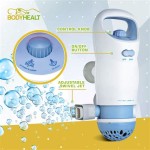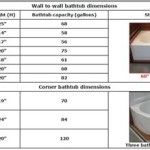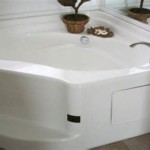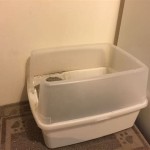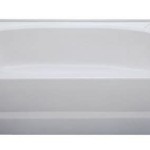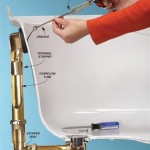How to Remove Silicone From a Bathtub Shower
Silicone sealant is a popular choice for sealing gaps and cracks around bathtubs and showers. However, over time, silicone can become discolored, moldy, or simply worn out. When this happens, it's necessary to remove the old silicone and apply new sealant. Removing silicone from a bathtub shower can be challenging, but with the right tools and techniques, it's a manageable task. This article will guide you through the process, outlining the essential steps for a successful silicone removal.
Prepare the Environment
Before you start removing silicone sealant, it's crucial to prepare the environment for a safe and effective process. Begin by ensuring adequate ventilation to prevent the build-up of fumes and ensure good air circulation. Wear protective gear such as gloves and eye protection to safeguard yourself from any potential irritants. Additionally, if working with a utility knife, take extra care to avoid cutting yourself.
Choose the Right Tool
The tool you choose for removing silicone sealant depends on the type of sealant and the extent of its application. For a thin layer of silicone, a utility knife with a sharp blade will suffice. The blade should be used at a shallow angle to the surface to prevent damage. For thicker or more stubborn silicone, consider using a scraper or a silicone removal tool. These tools are specifically designed to remove silicone sealant efficiently, without damaging the underlying surface.
If you are working with a very thick or old layer of silicone, you can use a heat gun to soften the sealant. However, be extremely cautious when using a heat gun, as the heat can damage the surface material. Always follow the manufacturer's instructions and use a low heat setting for a safe and effective removal.
Remove the Silicone
Once you have chosen the appropriate tool and prepared the environment, it's time to remove the silicone. Begin by cutting the silicone sealant along the edges of the joint, creating a line through the sealant. This will help to loosen the silicone and make it easier to remove. Then, use your chosen tool to scrape the silicone away, working slowly and carefully to avoid damaging the underlying surface.
If you are working with a utility knife, use it at a shallow angle to the surface and apply gentle pressure. Work in small sections and avoid excessive force to prevent damaging the tub. Use a scraper when removing thicker silicone. Apply pressure to the scraper, moving it along the sealant line and removing it as you go. For stubborn silicone, you can use a silicone removal tool or a heat gun to soften the sealant before scraping. Always use caution when applying pressure and be mindful of the surrounding materials to prevent damage.
Cleaning the Surface
After removing the silicone, thoroughly clean the surface to remove any remaining residue. Use a cleaning agent designed for silicone removal or a combination of rubbing alcohol and a scrub brush. Ensure to follow the instructions provided on the cleaning product and avoid harsh chemicals that might damage the surface. Be sure to thoroughly rinse the area after cleaning to remove any traces of the cleaning agent.
Applying New Sealant
Once the surface is clean and dry, you can apply new silicone sealant. This step requires careful preparation. Ensure the surface is free from debris or dust. Use a damp cloth to wipe down the area you plan to seal before applying the sealant. Use a caulking gun to apply the sealant, ensuring a smooth and even application. Apply pressure evenly to the gun to squeeze out the sealant, and smooth the sealant with a damp finger or a caulking tool. Allow the sealant to dry according to the manufacturer's instructions before using the shower.
Alternatives to Silicone
While silicone remains a popular sealant, there are alternatives available that offer similar functionality with potential advantages. Polyurethane sealant is another common choice known for its high strength, elasticity, and resistance to moisture. Additionally, acrylic sealant is a water-based option that is easier to clean and less prone to mildew growth. These alternatives might be more suitable for specific applications depending on your needs.

How To Remove Silicone Sealant Diy Guide Removing Old Beginners Removal

Best Way To Remove Silicone Caulk From Tub

Remove And Replace Your Old Silicone
How To Remove Silicone From A Shower Diy 2025 Guide

How To Remove And Replace Your Tub Shower Caulk Stone S Home Centers

How To Remove Silicone Sealant Daqiq Chimie Co

How To Remove Caulk Ace Hardware

How To Remove Silicone From Tiles A Step By Guide
How To Remove Silicone Caulk Best Method

How To Remove Bathroom Sealant Sanctuary Bathrooms



